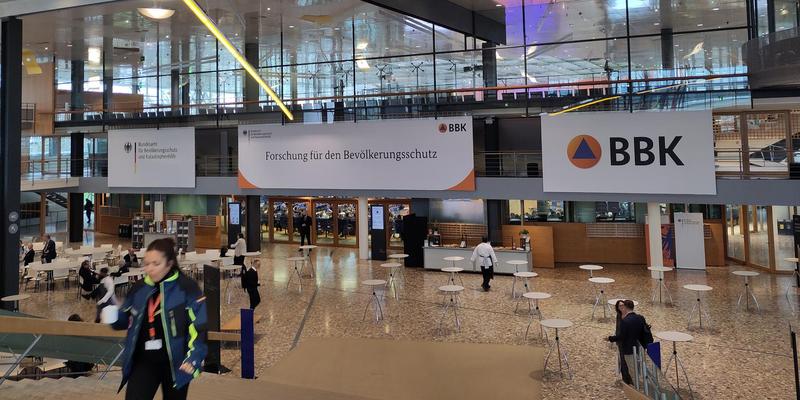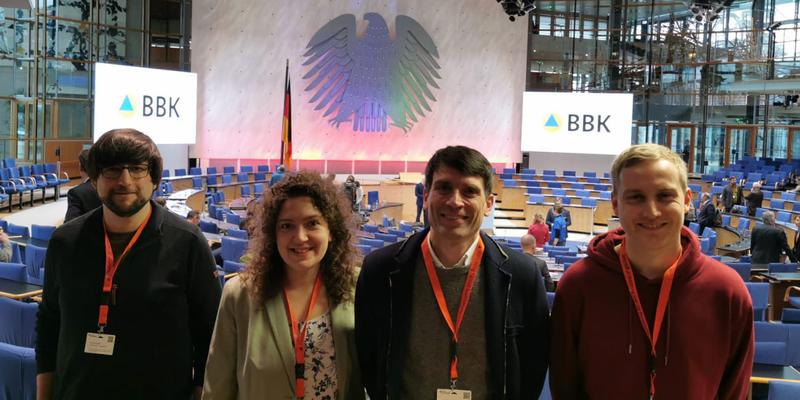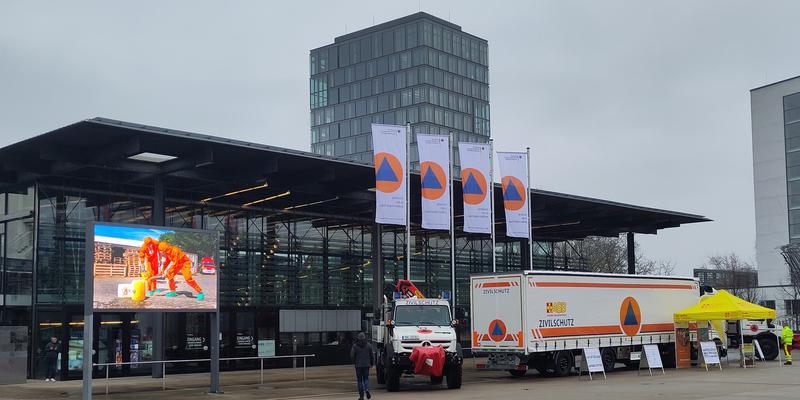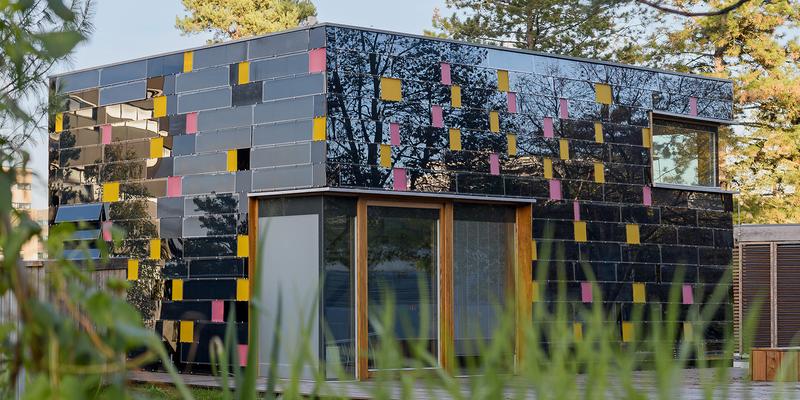Research for Civil Protection presented
emergenCITY scientists featured a vulnerability study and smart home warning systems at the BBK conference.
emergenCITY scientists featured a vulnerability study and smart home warning systems at the BBK conference.

How can knowledge about social vulnerability in urban neighborhoods help civil protection? What role can smart homes play in warning the population in crises? Researchers at the LOEWE center emergenCITY are working on these questions. They presented their findings last week at the BBK conference in Bonn.
From February 5 to 7, 900 experts from science, research, administration and practice came together at the Federal Office of Civil Protection and Disaster Assistance’s (BBK) “Research for Civil Protection” conference to discuss the topics of civil protection and civil defense. It took place at the World Conference Center in Bonn for the second time since 2023. The four emergenCITY scientists Nadja Thiessen, Joachim Schulze, Markus Henkel and Frank Hessel also presented their research results.

Parts of our society face additional challenges in coping with everyday life, for example because they are limited by their age, health impairments or a lack of social contacts. However, they are particularly vulnerable during crises. In the event of a flood, power failure or other disasters, they are dependent on support and rapid assistance from the emergency services. Knowing where these people are can be vital in an emergency.
From the perspective of the “capability approach”, which not only records people’s vulnerabilities but also looks at how they can be overcome, historian Nadja Thiessen and architect Joachim Schulze have looked at how social vulnerabilities have developed in the 37 statistical districts of the city of Darmstadt over a period of around 60 years. They presented their study, in which Professor Jean-Christophe Dissart from the Université Grenoble Alpes was also involved, for the first time at the conference.
One of the results of their study, entitled “Social vulnerability as an indicator of the population’s resilience to crises”, is an urban map that shows the neighborhoods in which social vulnerabilities were particularly pronounced between 1960 and 2019. Numerous statistical data from the districts are included, such as age, marital status, household composition and income.

“Our study shows that social vulnerability has persisted in some urban districts for 60 years,” says Nadja Thiessen, researcher at the Institute of History at TU Darmstadt. “The results provide important insights for disaster prevention,” adds Joachim Schulze, researcher at the Group of Design and Urban Development at TU Darmstadt. “For example, emergency services could distribute their resources differently in the event of a disaster and pay more attention to neighborhoods with high vulnerability.”
The presentation was followed by a lively discussion. The participants discussed the extent to which the vulnerability analysis can be transferred to other cities and the influence of a solidary neighborhood and a strong neighborhood on the resilience of residents. Historian Nadja Thiessen also answered questions about the study in an interview with Deutschlandfunk Kultur, which can be listened to at www.deutschlandfunkkultur.de.

emergenCITY scientists Markus Henkel and Frank Hessel also provided insights into their research on smart homes under the title “Smart homes as an addition to the warning mix”. The Darmstadt-based researchers investigated the contribution these intelligent homes can make to warning the population in crises and disasters and responding to dangers. Specifically, they wanted to find out in which dangerous situations people would rely on their smart home’s warning system.
The researchers simulated four different hazardous situations in an energy self-sufficient smart home, the “eHUB”, which is located on the Lichtwiese campus of TU Darmstadt. The results of their studies show that the greater the danger, the more willing people are to let the smart home decide on the right response, such as automatically closing windows and doors.
“While individual devices such as smoke alarms warn residents of certain dangers, integration into comprehensive smart home warning systems offers the potential for greater security, as components can react to threats on the basis of predefined protocols,” explains Markus Henkel, a scientist at the Group of Science and Technology for Peace and Security at TU Darmstadt.
“I was impressed by the interdisciplinary program, all disciplines were represented as well as a mix of science and practice,” Nadja Thiessen sums up after the conference. “Above all, I took away inspiration from the presentations and the speakers for my research, whose disciplines are not represented at emergenCITY, including social work and sociology.” And Markus Henkel added: “For me, the information in the presentations on the topic of warnings was particularly interesting, as were the insights of BBK employees who work on this topic every day.”